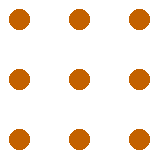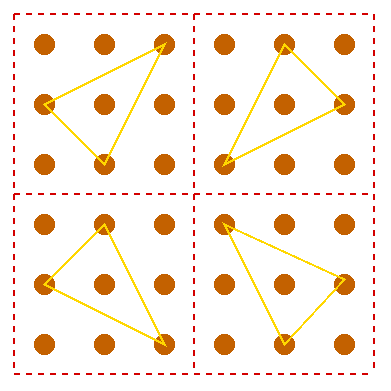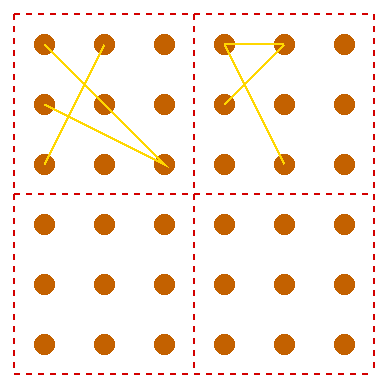Copyright © University of Cambridge. All rights reserved.
'Tri.'s' printed from https://nrich.maths.org/
Show menu
Why do this problem?
This problem is ideal for helping pupils get a broader idea about triangles. It also gives the pupils a chance to use their natural curiosity to pose questions for them to solve themselves. Asking the question "I wonder what would happen if I...? is a good way to start, and perseverance will possibly take them to a
new understanding of triangles.
Possible approach
If you are working with young children then I would use nail boards for this challenge, but provide the youngsters with prepared dotted paper with 3 by 3s easily seen (you could print off this sheet of grids). It is best to use those boards that have the nails as far apart as
possible (the old inch ones are good and it is important to use three bands, one for each line that constructs the triangle). They may need help initially in transferring their ideas from the boards to the paper.
With older children you may be able to dispense with the boards almost straight away and get them using the paper only. This allows the children to work quite quickly.
You could use the virtual geoboard to share ideas on the interactive whiteboard.
Key questions
Tell me about this triangle you've made.
Is this triangle SMALLER, THE SAME SIZE or BIGGER than this one?
Possible extension
The area of these triangles can be considered by some pupils, but difficulties will probably arise when it comes to the smaller triangles that are "hung" between the dots with no vertex at a dot. Fairly obvious extensions of using 4 by 4 dots and using four lines to produce squares (probably best to start with a 4 by 4 for squares) will captivate some children. Last but not least those
children who like doing things neatly and take care in presentation can produce delightful work that can be displayed in school and attract attention to the work of investigations in school.
For more extension work

Possible support
Many youngsters will be encouraged when their teacher joins in the activity with them.


